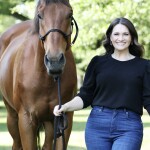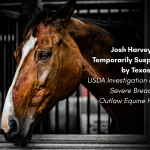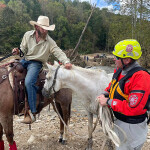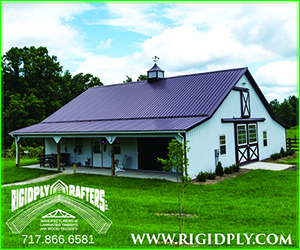Horse Care during Extreme Cold
Arctic Blast, I’m sorry, what!? We live in the south. Usually I worry more about the summer’s unbearable heat. We had a horse, Bucky, that had anhidrosis so when summer approached we prepared. Misting fans, supplements, even finding a cooler summer barn we could move him to during the peak of the summer was a yearly routine. It was stressful every year. Keeping him comfortable was the goal, but it was difficult to make sure he had proper care, especially since it is a rare condition that not many horse people deal with regularly.
Now, winter has become the season I stress over, and when I hear the weatherman say phrases like “Polar Vortex, Arctic Blast, Ice and Northern Winds” my stress level rises. All because my senior Thoroughbred, Gage, can no longer eat hay, the main nutritional necessity for horses in the winter.
Due to Gage’s megaesophagus he is unable to swallow hay. He has had this condition since he was about 5 or 6 years old. When he would graze and eat I’d notice a bulge in his throat but it never caused any issues. He didn’t have choking episodes and he was an extremely low maintenance Thoroughbred. As he aged I had to watch him a little more closely. I started adding some water to his feed and I fed him high off the ground. He did not have a full choke until he was about 14 or 15. Then when he was 16 he had a massive choke, followed by pneumonia and a hospital stay. After that, the hay was a hard no.
While working closely with his Veterinarian, we came up with a nutritional plan for him. In the summers he is able to graze safely while being supplemented with senior feed. However, when winter comes and the grass goes dormant, he must rely 100% on senior feed three to five times a day depending on how cold it gets. His feed is completely liquified, and, thankfully, he slurps it down with no complaints.
Senior feed is heavy with forage. Unlike other grains, senior feed is safe to feed horses 100% of the time if hay and grass are not options. Many senior horses are prone to choke due to issues with teeth. A megaesophagus is rare in horses, and it can be found in some breeds, like Fresians, more so than others. Overall, only about .5% of horses have this degenerative condition, and they typically are extremely hard to manage. I know: anhidrosis, megaesophagus, somehow these horses find ways into my heart.
My barn is set up nicely for hot summers. We built stalls that open to the horse pasture under a large overhang. Closed on the west and south the horses have a nice crossbreeze from the north and east that helps cool them during extreme heat in the summer. In the winter, however, when winds come out of the north, it can be frigid. And when the temperature plummets to sub zero levels, Gage needs extra TLC to keep him warm and from dropping too much weight.
Our old barn was used as a workshop. The inside has shelves from floor to ceiling. When we moved to the property two years ago I told my husband my vision of building out interior horse stalls, specifically to keep the horses out of extreme winter temperatures. Clearing out the shelving and setting up interior stalls had taken a back seat. And then “Arctic Blast” was forecasted to slam our southern region, dropping our temperatures 50 degrees in less than 12 hours. What a nightmare for horse and livestock owners!
The only thing I knew to do was start my “reno” project. On Tuesday at 2:30 pm, before the Thursday arctic blast was expected to arrive, I walked into the barn, picked up a hammer, put on my gloves and I went swinging away. With every shelf that came down I thought about the things I have done in order to keep my horses comfortable. By the end of it I ripped out shelving that occupied a 200 square foot space, laid eight stall matts, weighing 100 lbs each and patched some rotten wood on the west wall that needed repairs.
The outcome was a 10 x 20 indoor stall that opened up to their 10 x 18 stalls under the overhang. I double blanketed Gage, and I fed him every 3 hours to help keep him hydrated and add extra calories, knowing it would be rough throughout the nights at sub zero temps.
Luckily, my old fella did well, and now we have a nice indoor stall to keep him out of the extreme northern winds when it blows through our southern region. The next step is to remove all the shelving from the neighboring area in the barn to make a second stall for our hardy mustang pony. Hopefully, we do not have any more arctic blasts this winter, but if we do I’ll be ready.
In this issue we wanted to highlight Winter Horse Care and ways to better prepare for freezing temperatures. Keeping horses comfortable and healthy throughout all seasons is the main goal for horse owners and caregivers. We hope this issue will help make your winter less stressful on you and your horses.










